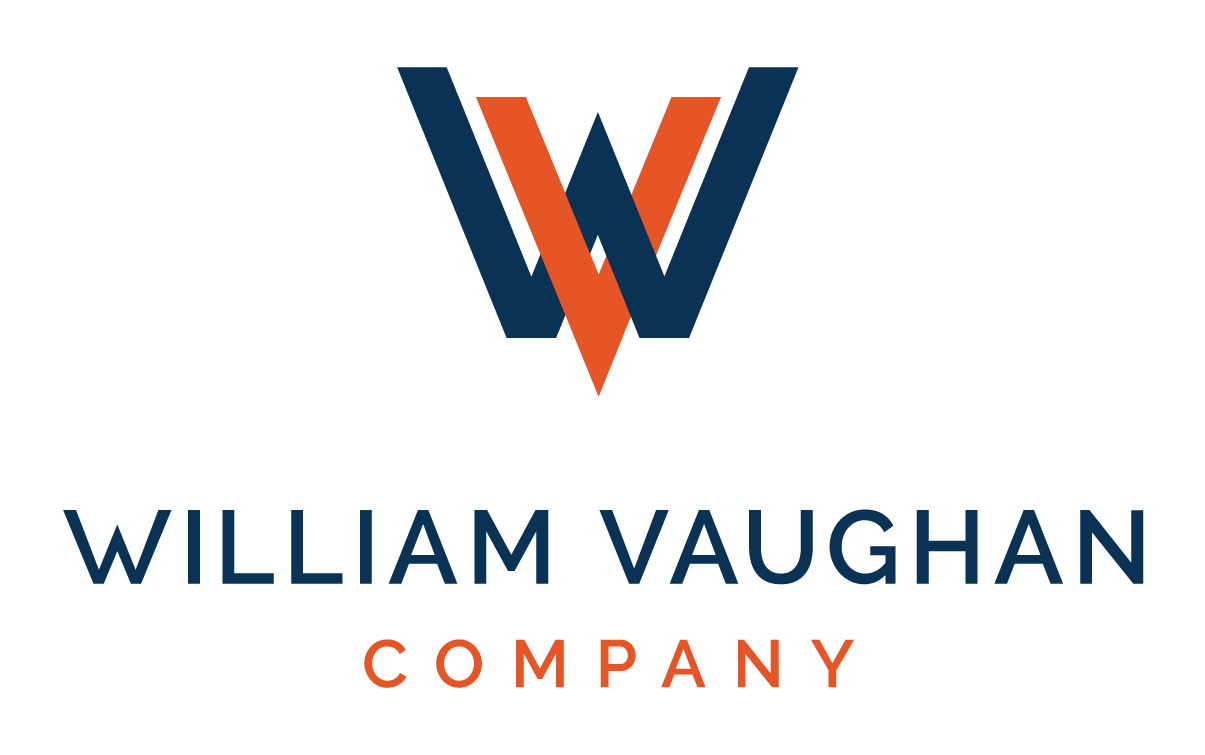IRS Releases New Employee Retention Tax Credit Guidance
Mar 28, 2025

Wait, we’re talking about the Employee Retention Tax Credit (ERC) yet again? Yes, you read it right, after hearing very little on the topic for the past 18 months, ERC is back in the news. On March 20, 2025, the IRS released new Employee Retention Tax Credit Guidance in an updated FAQ.
Specifically, the IRS introduced a new section entitled “Income Tax & ERC,” that addresses, one, situations where taxpayers didn’t reduce their claimed wage expense but received the ERC, and two, situations where taxpayers did reduce wage expenses but had a disallowed ERC claim. The tax authority also expanded guidance on reporting ERC fraud.
Here is what you need to know:
Income Tax & ERC
- The IRS stands by its original position that taxpayers should have reduced their deductible wage expense by the amount of allowed ERC in the tax year the qualified wages were paid or incurred. However, the IRS is now providing alternative solutions for claiming unreduced wages. Under the revised guidelines, taxpayers now have the option to report the overstated wage expense as gross income in the tax year when the Employee Retention Credit was received, rather than amending their previous returns. This marks a shift from the earlier policy.
- The updated FAQ also addresses scenarios where an ERC claim was denied after a taxpayer had already reduced their wage expenses for the year in which the qualified wages were paid. In these cases, taxpayers can now adjust their current return to reflect the increased wage expense corresponding to the disallowed ERC, instead of filing an amended tax return, an AAR, or a protective claim for refund for the earlier tax year. It’s important to note that taxpayers may still opt to amend previous returns to recapture the previously reduced wages.
ERC Scams
- The IRS has issued further guidance on the procedures for reporting ERC-related fraud, strongly urging taxpayers to report any suspicious activities, including illegal, tax-related activities involving ERC claims, individuals who promote improper and abusive tax schemes, and tax return preparers who deliberately prepare improper returns. The step-by-step process for reporting ERC fraud can be found in the “ERC Scam” section of the FAQ.
To read the full FAQ along with the updated guidance, please refer to the IRS website here. To better understand how this new guidance may impact your business, we encourage you to connect with our Employee Retention Tax Credit (ERC) lead, Mike Hanf.
Mike Hanf, Tax Partner – mike.hanf@wvco.com
Categories: Tax Compliance
UPDATED 3/3/205 – BOI Reporting Reinstated: Latest Legal Developments
Feb 20, 2025

UPDATE 3/3/2025: FinCEN Not Issuing Fines or Penalties in Connection with Beneficial Ownership Information Reporting Deadlines, read FINCEN’s release here!
On Monday, February 17, a federal district court judge in Texas lifted the suspension on the Corporate Transparency Act, reinstating the requirement to report beneficial ownership information.
In a recent announcement from the Financial Crimes Enforcement Network (FinCEN), the deadline for most companies to submit their reports has been extended to 30 calendar days from February 19, 2025, setting the new due date to March 21, 2025.
FinCEN also mentioned plans to review the beneficial ownership information reporting requirements under the Corporate Transparency Act. This review aims to reduce the reporting burden on low-risk entities while focusing enforcement efforts on threats that pose significant risks to U.S. national security. The criteria for identifying low-risk companies remain unclear, but this evaluation will occur over the next 30 days.
For general details on BOI Reporting being reinstated, please visit William Vaughan Company’s BOI Insights & Resource Hub. For comprehensive guidance, we encourage you to visit FINCEN’s website.
Categories: Tax Compliance
Should I Cancel My Ohio CAT Account?
Sep 26, 2023
Commercial Activity Tax Changes Under Ohio House Bill 33
We recently covered the changes to Ohio’s tax codes that were enacted by Ohio House Bill 33 after it’s passage into law in July of 2023. The new law introduced several changes to state tax codes that could prove advantageous for Ohio business owners. One of the more significant changes to the tax law relates to how CAT is reported.
The CAT is calculated using a business’s taxable gross receipts. As a result of the passing bill, beginning January 1, 2024, the CAT annual minimum tax will be eliminated, and the exemption amounts for businesses will be significantly increased. Under the new law, the CAT rate of .26% will stay the same, but will now only affect taxpayers with gross receipts over $3 million in 2024, (that number will increase to $6 million in 2025).
Taxpayer Implications
Businesses currently reporting under $1 million in gross receipts, and that are predicted to have less than $3 million in gross receipts in 2024, should cancel their CAT account effective December 31, 2023, and file a final annual CAT return, due May 10, 2024. Once the final CAT return is filed, taxpayers with gross receipts under the exemption amount will no longer have to file an annual CAT return in subsequent years. Taxpayers that predict they will have annual gross receipts between $3 million and $6 million should file their final CAT return the following year, 2025. All remaining CAT payers that do not meet the exclusion amount must still file quarterly returns for tax periods after January 1, 2024.
If a taxpayer does not cancel their CAT account, they will still be required to file a CAT return until the account is canceled, even if nothing is due. Taxpayers may cancel their CAT account by visiting the CAT Cancel Account Transaction on the Ohio Department of Taxation’s Business Gateway (preferred method.) Alternatively, those wishing to cancel their CAT account can also complete and submit a “Business Account Update Form” available in the “Tax Forms” section of the Ohio Department of Taxation’s website.
If a business’s gross receipts happen to exceed the exclusion amount in subsequent periods, the taxpayer must reactivate their CAT account and resume filing returns and paying the Commercial Activity Tax at that time.
Conclusion
Ohio House Bill 33 has made several alterations to Ohio’s tax laws, with the regulations around Commercial Activity Tax being particularly affected. For more information on these changes, visit the official release from the Ohio Department of Taxation.
William Vaughan Company will continue to monitor the changes resulting from this bill as well as other state and federal tax bills.
Questions or concerns about how these changes apply to your specific CAT filings? Connect with us today to get a better understanding of these new developments and mitigate tax risks in your business.
Categories: Tax Compliance
Ohio House Bill 33 Explained
Jul 17, 2023
Ohioans can expect significant changes to state tax laws next year thanks to Ohio House Bill 33. The newly passed piece of legislature, signed by Governor Mike DeWine on July 3, 2023, establishes state operating appropriations for fiscal years 2024-2025. This comprehensive legislation also brings several tax advantages specifically designed to benefit Ohio business owners. Taxpayers can expect changes to personal income tax, Commercial Activity Tax, Pass-Through Entity Tax Credits, and Municipal tax.
Personal Income Tax Reductions
The first significant change introduced by House Bill 33 is a reduction in personal income tax rates. The new law establishes two tax brackets based on income levels. If you earn over $26,050, you’ll pay a marginal tax rate of 2.75%. For individuals with income over $100,000, the rate increases slightly to 3.5%. Those earning $26,050 or less will be exempt from paying any income taxes to the state of Ohio.
Commercial Activity Tax (CAT) Exemption
House Bill 33 also brings changes to the Commercial Activity Tax (CAT), affecting businesses in Ohio. CAT is determined based off a business’s taxable gross receipts. The new law significantly increases the annual exemption threshold for businesses. Previously, businesses with taxable gross receipts under $150,000 were exempt from paying CAT. However, under the new law, the exemption amount rises to $3 million for the 2024 tax year and further increases to $6 million starting in 2025. This means that a large amount of Ohio-based businesses will no longer have to pay CAT.
Pass-Through Entity (PTE) Tax Credit
Another important change under House Bill 33 is the introduction of a tax credit for Ohio residents subject to double taxation on pass-through entity (PTE) income. Pass-through entities include businesses like partnerships, S corporations, and limited liability companies (LLCs). Often, individuals earning income from such entities face double taxation, meaning they pay taxes at both the entity level and the individual level. The new law allows Ohio residents to claim a credit on their individual tax returns for PTE taxes paid to other states, helping alleviate the burden of double taxation.
Municipal Tax Changes
Finally, House Bill 33 will enact several changes to municipal taxes in Ohio. Municipal taxes are taxes imposed by local governments, such as cities and towns. The new law reduces fees and penalties for late filing of municipal income tax returns, making it more affordable for taxpayers to comply with local tax obligations. Additionally, the bill extends the due date for filing municipal net profits tax returns from October 15th to November 15th, giving individuals and businesses more time to prepare their tax returns.
Furthermore, House Bill 33 exempts individuals under the age of 18 from Ohio municipal income tax. This means that high school students who have part-time jobs or earn income from other sources will not have to pay municipal income tax in Ohio.
Other Changes
The newly passed bill includes numerous other provisions aimed at providing tax relief for both business and individuals. From baby wipes and cribs, to traffic control services often used by construction contractors, taxpayers can expect additions to the state’s list of tax-exempt goods and services. Businesses with remote or hybrid employees in Ohio can also expect a new option for calculating their municipal net profits tax.
Conclusion
Ultimately, the passage of Ohio House Bill 33 introduces several significant changes to the state’s tax landscape. William Vaughan Company’s tax team will continue to monitor changes resulting from House Bill 33 along with other state and federal tax updates. For both businesses and individuals, understanding tax law is crucial when it comes to making informed financial decisions. Don’t leave your finances up to chance, connect with us today to understand how House Bill 33 may effect your specific situation.
Connect with us.
wvco.com
Categories: Tax Compliance, Tax Planning
Scam Alert: Distraint Warrant Scam
Jul 05, 2023
William Vaughan Company was recently made aware of a highly concerning scam surfacing in Lucas County. Many local businesses have received fraudulent “Distraint Warrants” in the mail, sent by a fictitious entity called the “Tax Resolution Unit.” While these letters seem to primarily target businesses, a handful of individuals have also received them. In the interest of our community and the individuals we serve, here are some important detail about this distraint warrant scam along with essential tips on safeguarding yourself against such fraudulent activities.
The Scam:
In this distrain warrant scam, individuals and businesses receive official-looking documents in the mail from the Lucas County “Tax Resolution Unit.” The document claims that a Distraint Warrant has been issued against the recipient due to unpaid tax debts. The scammers exploit fear and urgency, attempting to coerce victims into making immediate payments via telephone to a toll-free number. However, it’s crucial to note that Lucas County does not have a Tax Resolution Unit or an office of Public Judgment Records.
How to Protect Yourself:

Verify the source: Take a moment to verify the authenticity of any suspicious document you receive. Contact the relevant county offices or authorities to confirm the legitimacy of the warrant or notification. Don’t hesitate to reach out to our team if you need assistance in this regard.
Exercise caution: Be wary of unexpected or unsolicited communications regarding taxes or debts. Genuine organizations typically communicate through official channels and offer multiple opportunities to resolve any issues. Be skeptical of sudden demands for payment or urgent actions.
Guard your personal information: Under no circumstances should you share sensitive personal or financial information, such as social security numbers, bank account details, or credit card numbers, in response to such requests. Legitimate authorities, like the IRS, will not ask for this information via email or phone. Nor will the IRS take payment by cashier’s check, in the form of gift cards, or wire transfer.
Report the scam: If you receive a suspicious document or believe you have encountered a scam, promptly report it to the relevant authorities. You can report it to the IRS by either calling 1-800-366-4484 or visiting the US Treasury website. Consider calling your local police so it is aware of the scam as often times communities are targeted all at once. Finally, the Federal Trade Commission’s Report A Fraud site is shared with law enforcement across the country. Your report can help bring attention to the scam and prevent others from falling victim.
Spread awareness: Share this information with your friends, family, and colleagues to raise awareness about the scam. Utilize social media, local community groups, or any platform that can reach a wider audience. The more people are informed, the harder it becomes for scammers to succeed.
As trusted tax and business advisors, our clients’ financial well-being and security is our top priority. The “Distraint Warrant” scam targeting Lucas County residents and businesses is an unfortunate reminder of the dangers posed by fraudulent activities. However, by staying vigilant, verifying sources, and reporting suspicious incidents, we can collectively protect ourselves and our community from falling victim to these scams. If you have any concerns or require assistance, please don’t hesitate to contact us.
Connect with us.
wvco.com
Categories: Fraud & Forensics, Tax Compliance
